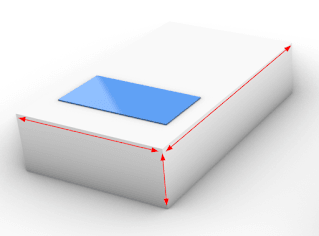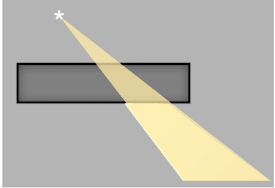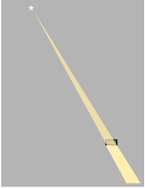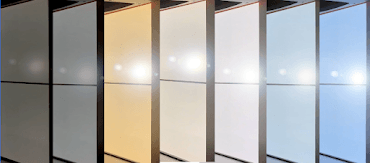Innerscene Virtual Sun A7 vs Competitor
_
_
_
_
_
_
_
_
_
_
_
_
Requires a large amount of space

A7 can be installed in tightly packed 2d arrays

_


_

_
_
_
_
_
_
_
_
_
_
_
_
_
Requires a large amount of space
A7 can be installed in tightly packed 2d arrays
_
_
_
Lower Efficacy translates to less light per watt and more heat generated that must be cooled through air conditioning
1
Competitor requires 18X more structual weight support compared to Innerscene VS7 making competitor much more expensive to install
2
A beam angle of 45 degrees makes the sun appear to be low in the sky. 30 degrees allows occupants to comfortably walk around without eye glare
3
Divergance angle determines sunbeam sharpness on the floor, size of the sun in the sky as ceiling height increases, and apparent distance to the sun
4
Optically the sun for competitor appears to be at a distance of about 8m while IVS7 has an optical focal distance at infinity making it look far away
5
A7 is capable of moonlight, bright sunlight, and any brightness variation in-between. Competitor's sun and sky cannot be dimmed
6
Competitor requires 18X more ceiling volume compared to A7. Competitor requires nearly 3X as much ceiling depth compared is A7
7
Using a built-in clock, A7 automatically calculates sunrise & sunset times based on your GPS location and uses this to adjust light color for the time of day
8
Variable CCT allows for warm color temperatures in the morning and evening and gives flexability for harmonizing with other lighting in the room
9
When walking under competitor, the sun does not move at the correct speed in the sky because of incorrect focal distance and beam divergance angle
10
When a 1D or 2D array of A7 units are installed in the ceiling, users only see 1 sun at a time no matter how many units or users are present
11
A7 is able to modulate sun and sky seperately as well as control CCT which allows it to simulate the effect of clouds passing overhead
12